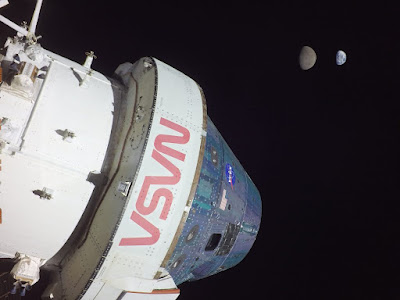Spotted the image in SpaceWeather. Check out the article (with another neat image, from the ground).
The SW piece linked to a blog post from NASA. I grabbed the large image from the NASA site.
The SpaceWeather article made an interesting remark, that the Moon and the Earth showed "nearly identical gibbous phases."
I like how they're almost the same size.
What is particularly interesting is that this gibbous Moon is not one we see, ever. It's the farside. So that's cool, by itself.
But this is also interesting, for those unclear, or disbelieving, for another reason. It shows the farside of the Moon is not in permanent darkness. The "dark side of the Moon" is a bit of a confusing matter for some.
Important fact: the Moon rotates in space, on its own axis, at a rate of approximate 29 days. That means at a particular point on the Moon, near the equator say, the Sun rises and then sets 14 "Terran" days later. Or to put it another way, the Moon "day" is 14 days long. And the Lunar Night is 14 days long.
Orion is halfway through its mission. All's well.



1 comment:
cool shot!
Post a Comment